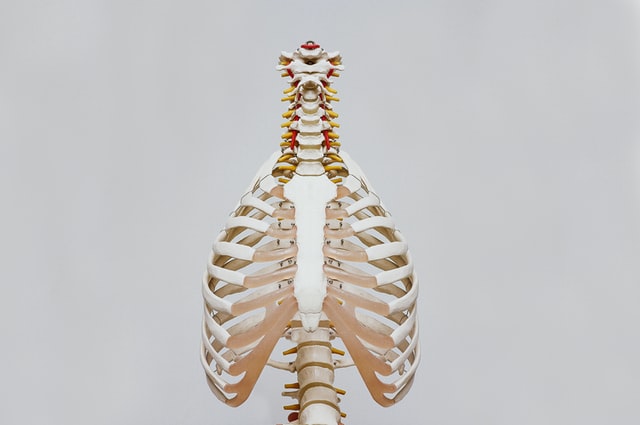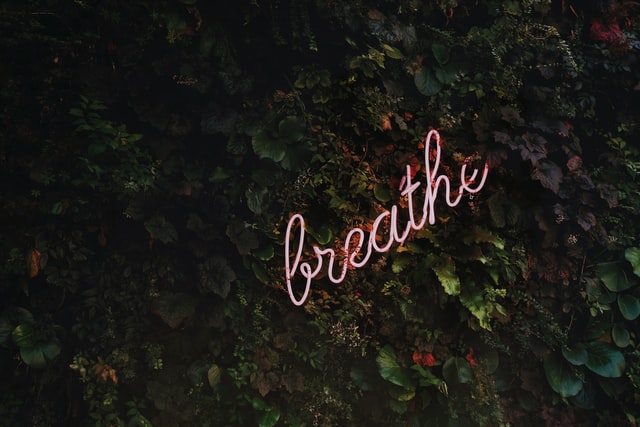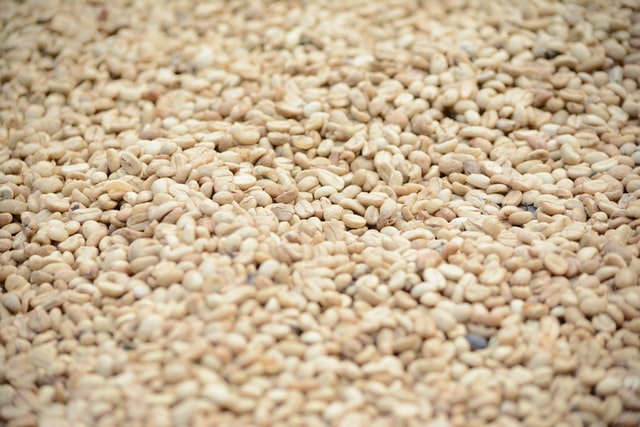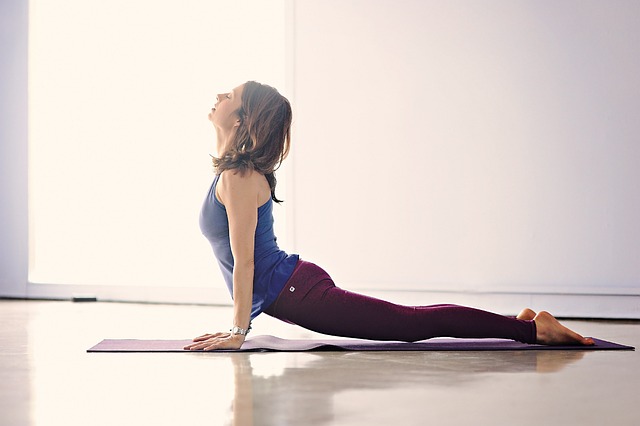When you’ve done a couple of yoga classes, you know how important breath is during your routine. It might also be that you’ve seen a couple of techniques, called pranayama.
There are many of them, but in this article, I’d like to zoom in on the most important one: The Full Yogic Breath!
This breathing technique is quite easy, but at the same time, it will cost you a lot of time to really nail it.
Why is that?
Well, we are so used to breathing wrongly, that we have to adjust ourselves again to do it correctly. And make it a habit once again.
What’s The Full Yogic Breath Good For?
Within the yogic scriptures, you’ll actually find quite often that controlling your breath will control your life. This we can translate into human words and say that when we control our breathing, we actually control our stress levels.
Just for yourself, observe for a full day what happens when you experience certain emotions.
You will for sure notice that with every emotion, comes a different type of breathing.
Ever heard someone say: You look angry, count to ten. Well, this is for a reason. It’s not the counting part that goes here, but when you feel a spurt of anger in your body, your heart rate and breath rate will shoot into the air as well.
While you are counting to ten, you focus on your respiratory system and you lower your heart rate again.
So, the main part why it’s good for you is because it’s going to lower your stress levels significantly.
I also had a physiotherapist that mentioned that when we do upper breast breathing, we only use 30% of the lung capacity.

Can you see how low that potential is? Luckily we don’t often breath like that. We mostly do that when we are in a lot of stress or experiencing extreme emotions.
People with hyperventilation might recognize this type of breathing. They specifically breathe through the chest, rapidly.
Also for them, it might be good to practice this type of breathing technique. Just to get used to it.
Full Yogic Breath Technique Explained
Quick Anatomy
Before we head into our inhales and exhales, it would be good to get a quick anatomy lesson to get your going. It will be very simple, but it’s just to make sure I don’t have to explain everything while I’m writing the next parts.
This small anatomy class will be mainly focused on different breathing types, so you’ll be fine.
Abdominal Breath
So, the breath that you hopefully are doing at this moment, is the abdominal breath.
It’s like the word itself already says, it’s breathing through your abdomens. Or your belly.
Within your basic meditation sessions, people will find that they often breathe like this. Which is also perfectly fine by the way.
Thoracic or Chest Breath
When we move a little bit more upward, we will find the thoracic breath. This one is not that common to hear about, even though we all have done it before.
This breath you really have to combine with the previous one. I’ve tried it a couple of times and it’s not that easy to isolate it. Nor does it feel really comfortable.
Why’s that? Well, because your lungs aren’t getting filled with a lot of air and it’s just not that natural.
With this breathing technique, you’ll most likely want to use your abdominal breathing as well.
You also make sure that you don’t push the diaphragm up because then you’ll be getting even less air inside your lungs.
Thoracic breath is also a different name for chest breath. And basically, you’ll be using this very often when you are doing an activity like running, or when you are under a lot of stress (emotions).
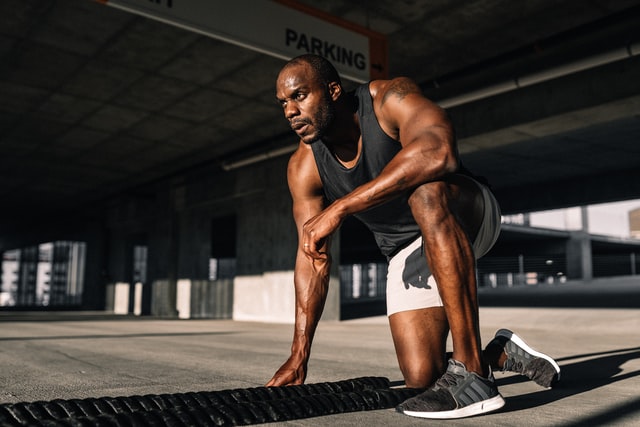
This way your body transports a lot of oxygen, or energy, throughout your body in a short amount of time.
It also must be said though that this raises your heartbeat and therefore, it also is more exhausting.
Which is why we don’t do this so often.
Clavicular Breathing
This one is not that common at all, and often just occurs when you are in shock. Like, you see something shocking happening and you grasp for air.
It’s called the only thing that happens is your clavicles (collar bones) are pushed up on an inhalation.
This means that not even a third of your lungs get filled under this technique.
I don’t even want to call it a technique as it’s just something that you do out of instinct.
Try doing it spontaneously, it’s super duper hard to do!
It also won’t be super sustainable as your body won’t get enough oxygen.
And no, you won’t die from it, your body will correct you soon enough.
2-Step Technique
Now, we know a bit more about a couple of natural-ish breathing techniques. Let’s put them into practice.
The first technique exists just out of two steps. It’s also part of the full yogic breath, although you often find people doing the 3-step technique.
Just do whatever you feel good with yourself. It’s better that you feel relaxed while breathing, rather than putting more strain in your body.
So, it’s actually really easy, you put the abdominal breath and Thoracic breath together! Et voila! Done!
Alright, let’s just incorporate it into some easy instructions that are easier to read for you:
Instructions

- So, if you are starting with yoga or meditation, I’d say it would be good to be on your back. Lying down. If you’ve had more practice, you can go into a seated position.
- Close your eyes and to start with, just breath normally. Just put the focus on your breath without changing anything yet.
- When you are ready, you can put (if you want – great for beginners) one hand on the belly and the other on the chest.
- Now, when you are breathing, feel that the bottom hand is coming up on the inhale, being lifted by the belly. And it’s going down again on the exhale.
- Do this for a couple of minutes, just to get the hang of it and deepen your breathing.
- After this, breath in through the belly and try at the same time to breathe through the chest as well. You can do this at the same time, or you can fill up your belly and after that your chest.
- You feel both hands being lifted by your entire torso on the inhale and going down again on the exhale.
- Do this for as long as you want. If you are a beginner, about 5 minutes will be enough already. Make sure you use Insight Timer to get you started.
- When you are done, stay for another couple of minutes in savasana. Just to make sure that you stay quiet and relaxed for a bit longer.
3-Step Breathing
After that, you have the three-step breath. This one basically is the same as the two-step, but now you’ll also be adding the Clavicular breath. This step is a bit harder, so it might be good to have some experience already first.
It’s especially harder because you need a bigger lung capacity, which you’ll be getting after you’ve been doing yoga for a bit.
Basically, you’ll just be doing the steps above here.
But when you feel that your lungs are full, you inhale just that little bit more before you exhale.
It’s more of a sigh, but than on the inhale.
But, like I said, please try the method before first.
The 3-step method does fill up your entire lung, but some people might not be ready for this either.
